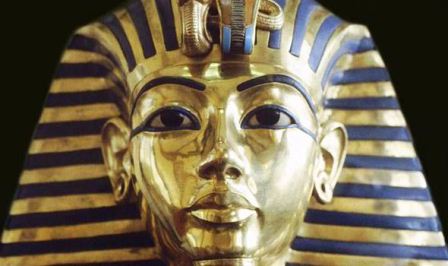The most famous boy pharaoh (king) of ancient Egypt has been revealed through cutting edge research as someone who suffered from a range of physical disabilities.
A far cry from the majestic gold burial mask that he is famed for.

Researchers conducted more than 2,000 computerised tomography (CT) scans on the skeleton of the famous Egyptian, who ruled in the 14th Century BC.
The research, which will be shown in a new BBC documentary, also hints at what may have killed the young blue blooded royal at just 19-years-old.
Previous theories have suggested that he may have died as a result of a chariot accident, but researchers believe that Tut had to rely on walking sticks to get around so is unlikely to have been involved in chariot racing. This theory is supported by the fact that at least 130 used walking canes were found in his tomb.
The virtual autopsy shows the toes are divergent – in layman’s terms it’s club foot. He would have been heavily limping according to Egyptian radiologist Ashraf Selim
In addition to studying the images, the researchers also carried out a genetic analysis of Tutankhamun’s family, which supports evidence that his parents were blood siblings.
Albert Zink, from the Institute for Mummies and the Iceman in Italy, deciphered the truth about the Tut’s parentage by studying the family’s DNA.
He found that Tut was born after his father Akhenaten had a relationship with his sister. Incest being an acceptable practice in Ancient Egyptian society.
Egyptian radiologist Ashraf Selim: “The virtual autopsy shows the toes are divergent – in layman’s terms it’s club foot. He would have been heavily limping.
“There is only one site where we can say a fracture happened before he died and that is the knee.”
If correct, this may go some way to explaining how Tut came to have such physical impairments. His family history may have also contributed to his premature death, the scientists believe.
It has long been suspected that Tut may have been murdered because of fractures found in his skull and other parts of his skeleton. But the experts are now throwing doubt on this theory, as they say just one of the breaks occurred before he died.
Also read: Global loss: King Tut loses beard





